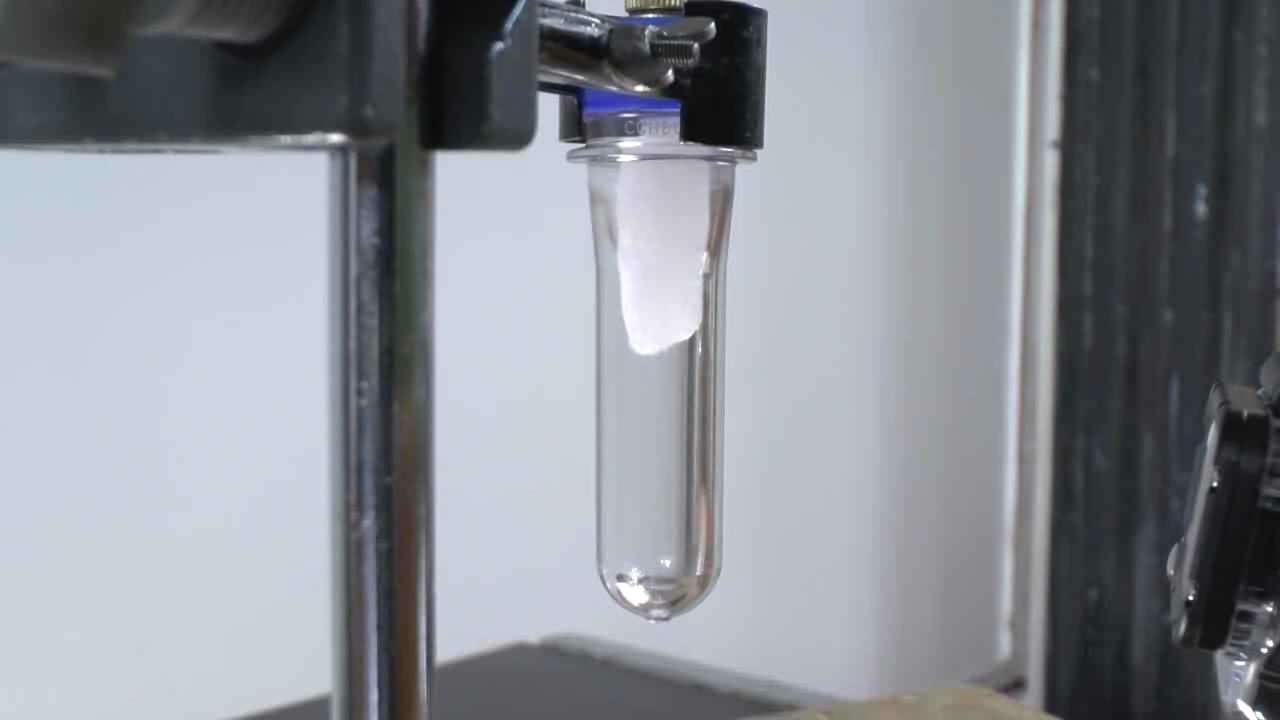Szárazjég olvasztás
Az elhangzó szöveg
A kisméretű, különleges, vastag falú műanyagból készült tartály rendkívül nagy nyomás elviselésére képes. A nyomás a tetején lévő gépjármű szelep segítségével csökkenthető. A szilárd szén-dioxidot azért nevezhetjük joggal szárazjégnek, mert normál, egy atmoszféra körüli nyomáson a szén-dioxid nem kerül cseppfolyós állapotba. A szárazjeget nyomástartó edénybe helyezve az intenzív szublimálás folyamán rohamosan növekszik körülötte a nyomás. 5,3 atmoszféra felett megjelenik a folyadék fázis. A nyomás hirtelen csökkentésére elkezd forrni a folyadék halmazállapotú szén-dioxid és visszaáll a szilárd halmazállapot. Jobban kitölti a térfogatot, inkább illik most rá a másik szokásos megnevezés: szénsavhó. A tartályt ismét lezárva a nyomás újra növekedik. A szublimáció során a hőmérséklet erőteljesen csökken, aminek következménye most a tartály falán is jelentkezik, hiszen s szénsavhó közvetlenül beborítja. A láthatóságot a pára gyakori törlésével lehet segíteni.
Melting of dry ice
A small size container with thick walls made of synthetics can endure extremely high pressures. The pressure can be lowered by a motor valve mounted on the top. The frozen carbon dioxide can be justly called dry ice since at normal, 1 bar pressure it will not liquefy. By putting the dry ice into a closed container the pressure around it will fastly increase due to the intense sublimation. At the pressure 5.3 bar the liquid phase will appear. Due to the sudden decrease of pressure the liquid carbon dioxide starts boiling and the solid phase will return. Since its volume is increased it is better called the carbonic acid snow. By closing the container again the pressure begins to increase. In the course of sublimation the temperature will strongly decrease, whose effect will be seen on the wall of the container, which is covered by carbonic acid snow. The visibility can be improved by the frequent cleaning off the vapor.
